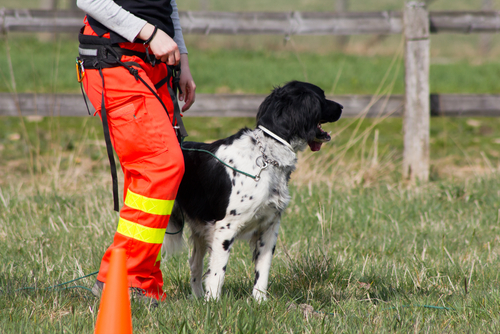John F. Kennedy once said, “Leadership and learning are indispensable to each other.” What does it take to be an effective pack leader? How does one rear a well mannered dog? Will they dominate the pack with sternness? Guide the members with positivitiy? Let equality reign? With so many options and opinions out there it’s hard to find something that works best for the family.
Are you an aggressive Alpha Dog?
Not mentioning any names, there is a world renown and respected trainer that shows the lesser mortals how to be a firm and effective pack leader, through domination and strength of will. This tactic is not for every owner, though there are a few who can pull it off effectively. Occasionally a dominant dog will run roughshod over a weaker owner and not take them seriously. The dog won’t listen, run away, and do what he wants because he knows there won’t be consequences for his actions. This is when “tough love” is needed. Using a blend of positive and negative reinforcement methods in training; the owner can take over pack leadership with boundaries and order.
Is there a benevolent kingdom waiting?
Those who fall into the benevolent leader role rule with a firm hand and a kind voice. Believing that respect is earned on both sides, this pack leader only uses the most positive based training methods while establishing who’s in charge. Boundaries are set early on and reinforced through positive praise and redirection; this type of leader believes it is better to set a dog up to succeed instead of waiting for a dog to fail before acting.
Believing in equal rights for equal treats?
There are owners and trainers alike who do not believe in the pack dynamic, but find it is better to treat each pack member as an equal. This theory emerged as more and more experts began delving into the lives of wolves and pack hierarchy, dispelling the myths of needing to totally dominate a dog into submission. This family dynamic weaves a symbiotic relationship between human and dog without the need to establish authority.
Lifelong Learning Curve
A truly effective leader, whether they are dominant, benevolent or all for equality, will recognize that teaching a dog manners, etiquette and obedience is an ongoing, evolutionary process. Any training needs to be reinforced on a day to day basis. Learning new techniques, innovative methods and fun activities not only keeps a dog interested in maintaining their politeness, but also keeps a pack leader from growing weary of the repetition. Learning and leadership go together like a dog and his human. They may be separated, but the outlook isn’t as pretty.
****
Renee Moen is a veteran shelter employee and certified dog trainer. Specializing in basic obedience and behavior modification, she recognizes each dog for their unique qualities and utilizes those for positive training experiences. Renee is an advocate for dispelling breed myths and denouncing breed discrimination. All dogs are created equal, owners on the other hand…
Living in sunny Longmont, Colorado with her husband, two children, two dogs, two cats and five birds, Ms. Moen is also an accomplished writer with five romantic comedies to her credit. She enjoys hiking in the foothills (with her fur babies), roller skating and swimming.

